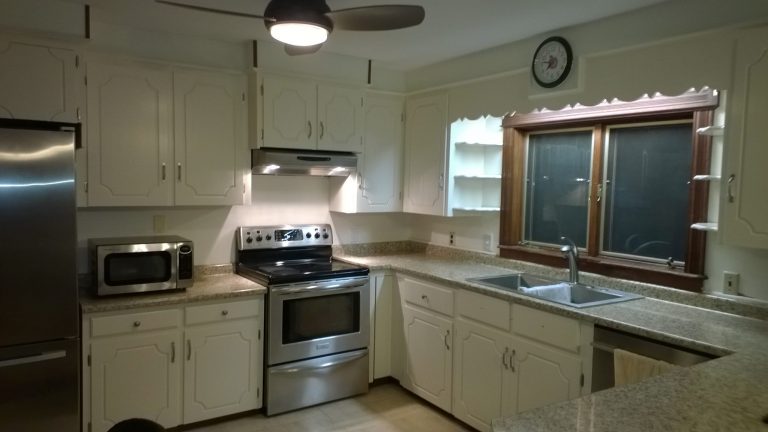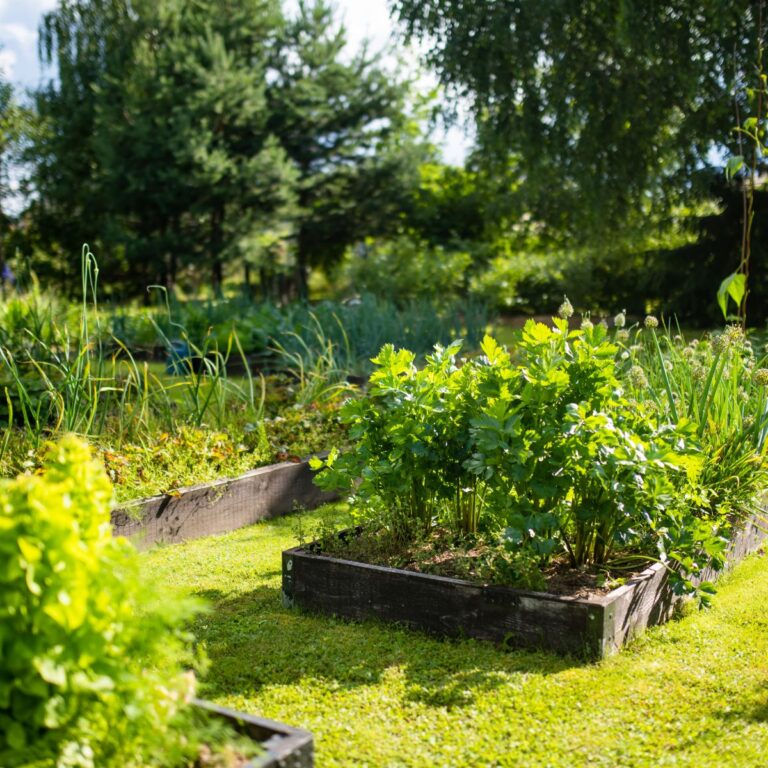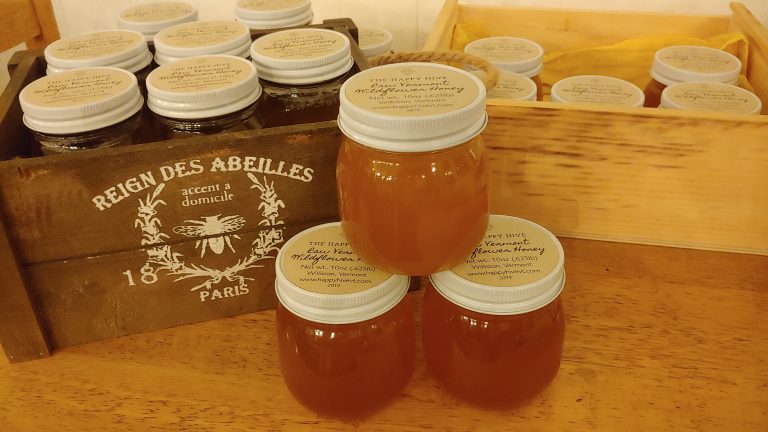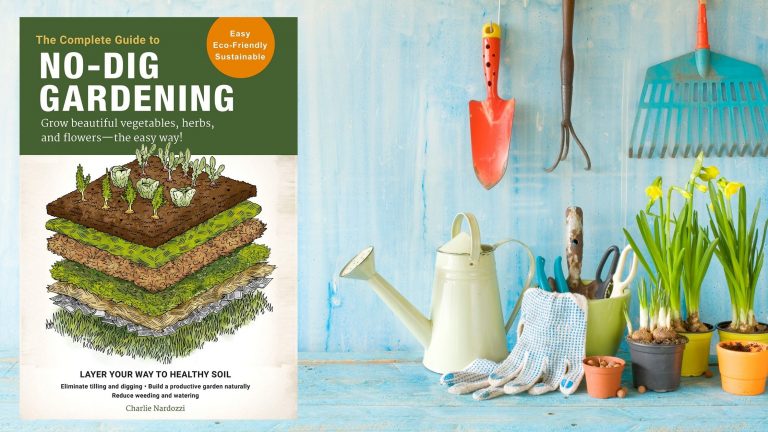This post may contain affiliate links.
There’s been a huge surge in the number of homesteaders interested in or practicing beekeeping as part of their journey to self-sufficiency.
The benefits are multi-fold: you get to enjoy your harvest of honey and maybe even sell some, and you get to support one or more honey bee colonies that will have a positive impact on the environment. You may also get to use the beeswax for homemade candles, salves, lotions, and balms. Raising bees can also be a great learning opportunity for the whole family.
That said, beekeeping also has its challenges – from hive pests and diseases to swarms and winter hive loss. Like most homesteading activities, your best defense against these challenges is learning, and learning can come from many different sources.
This article focuses on what you can do to learn about beekeeping from when you first think about taking up the practice to when you get your first hive. If you are hesitant about beekeeping due to fear, lack of knowledge, or expense – these steps can help you to make an informed decision about whether you are ready to enter into the beekeeping world.
Step One – Visit a Beekeeper
There is no substitution for putting on a bee suit and getting up close to a hive to see if you have the inclination to be a beekeeper. Talk to a beekeeper about their hobby or business, how much work and time it takes, what they see as the rewards, and how they got started. Beekeepers have a reputation for collaboration, even if only for self-preservation (diseases can spread so you don’t want an irresponsible beekeeper in your neighborhood). Generally, though, they are happy to help someone else because they care about honey bees! If you don’t know someone who is a beekeeper, many areas have local beekeeping groups or associations. They often have mentorship programs or lists of experiences keepers. Likewise, there are many public venues like farms, cultural attractions, or schools that are hosting hives and may also open them to the public.
Step Two – Read up on Beekeeping
Getting your hands on a good book about beekeeping can help to give you an overview of the hobby and an introduction to what is involved in becoming a beekeeper. While there are many books about beekeeping, I suggest you start with something that doesn’t get too complicated. A beekeeping store owner recommend the Future Farmers of America Guide to Beginning Beekeeping when I wanted to get a solid foundation to catch up with my husband and I found it to be an incredibly valuable beginner’s guide. You might find books on beekeeping at your local library as well, and of course there are many websites on this topic. For example, Keeping Backyard Bees, which is associated with Mother Earth News, has a wealth of information and a free online newsletter.
Step Three – Take a Beekeeping Class
There is only so much you can learn from a book or so many times you can tap your mentor for information. A class in beekeeping gets you into a room with an experienced beekeeper and a room full of people ready to ask questions that you might not have even known that you had. You’ll get a solid foundation that you can build on later with more advanced reading and research, and practice. Many local extension offices or community education programs offer introductory beekeeping classes, as do beekeeping supply stores. Find one that has a solid reputation and a teacher who clearly knows their stuff. And ask lots of questions while you have them at your service (without disrupting others, of course)!
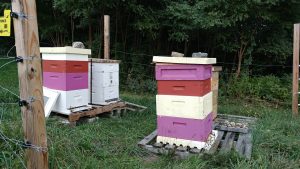
Step Four – Set up your Beeyard
To keep bees, you’ll want to choose a location where the hives will get some nice southern sun exposure and, ideally, be somewhat shielded from the wind. You’ll also want to make sure that they are not to close to everyday foot traffic, especially if you are in an urban area or have kids. Lastly, you’ll need to protect the bees from predators. The most likely predator is a bear, but if you’re in an urban area skunks could also be a problem. The best solution is to build a fence around your bees; this will also keep pests of the human variety away from the hives! The best fencing solution we’ve found is a solar powered electric fence that we installed ourselves. You’ll also need to check your local ordinances (or neighbors) to see if you can keep bees in your yard. If you can’t you may be able to work with someone who has more property in an allowed location to keep your bees there.
Step Five – Get your First Bee Hive
Obtaining your first hive could be as easy as walking into a beekeeping supply store and purchasing their “beginner’s package” which might also come with a class or two. But if you don’t have that resource at your fingertips, find a reputable supply company to help put together your first hive.
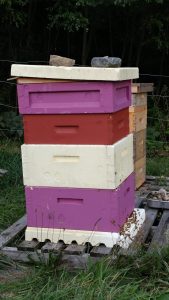
To get started you’ll need the following basic equipment:
- A Bee Suit– while experienced “bee whisperers” can maintain their hive with less protection, it is always a safe choice to buy a full bee suit to ensure you don’t get stung if you upset your bees. We recommend a suit with a full hood (or veil) that zips at the collar. Most full suits also come with a pair of gloves, but you’ll also want need a good pair of tall boots (rubber boots like these work well).
- Hive Parts and Equipment – a typical Langstroth bee hive is made up of a “deep” which is the bottom box where the bees will reproduce, a “super” which is a smaller box that fits on top of that for bees to build in, plus a cover and a base. If you are just beginning, you can often get a starter kit that comes with all of the necessary components to get started. Betterbee and Dadant are two large beekeeping supply houses. Betterbee offers a starter kit that also includes a hive tool (which helps you to separate and work with frames), a smoker (which helps to subdue the bees for working in the hive), a beekeeping book, and some gloves and a veil/hood combo. You’ll also need a bee “brush”, which is a soft-bristled brush to help you gently move bees out of the way as you are working your hive.
- Bees – you can start your hive in two ways – with a nucleus colony (nuc) or a “package”. The difference is basically how far along the colony is when you get it. A nucleus colony is further along – it has all of the bees it needs to function and usually comes with 5 frames of drawn honeycomb with honey, pollen, and brood in different stages of development. A nuc is essentially a small hive that is ready to expand into more space. A “package” is literally a package of bees with a separate queen ready to be integrated with the workers. There are no frames of drawn comb or brood in development, so it will take at least 3-4 weeks longer for the hive to get going in the spring, but packages also are much less expensive. Keeping Backyard Bees has a helpful article about choosing which to start with. When looking for bees, you can get local overwintered bees from keepers around you, or bees that have been shipped in to a distribution location in your area from elsewhere. There are various arguments for either route, and we have had success both ways. Talk to your local suppliers to see what they offer and discuss with them what they think would be best. You often have to order your bees in January or February for a spring hive, so think about it early!

Step Six – Network with Local Beekeepers
The beekeeping community is strong in many parts of the US and internationally. While gardeners often operate on their own and occasionally get to know each other through farmer’s markets, beekeepers have formed intentional groups to keep in touch with each other and learn together. Joining a local beekeepers’ association provides the opportunity to meet both experienced and novice beekeepers in your area. Many associations offer classes, conferences, and mentor programs that can help you boost your readiness for your first hive or improve your practice later. Associations also often keep in touch with each other about local regulations, activities, and diseases that might be making their way to your area. There is never a point at which there isn’t something new to learn, so staying connected to the community will ensure you don’t miss those opportunities.
Best of luck in your beekeeping adventure, and stay in touch with Homestead How-To for future articles on beekeeping practices!

Carrie Williams Howe is an educational leader by day and an aspiring homesteader by night and weekend. She lives on a small homestead in Vermont with her husband, two children, and a rambunctious border collie. She blogs about her family's homestead life at The Happy Hive.

